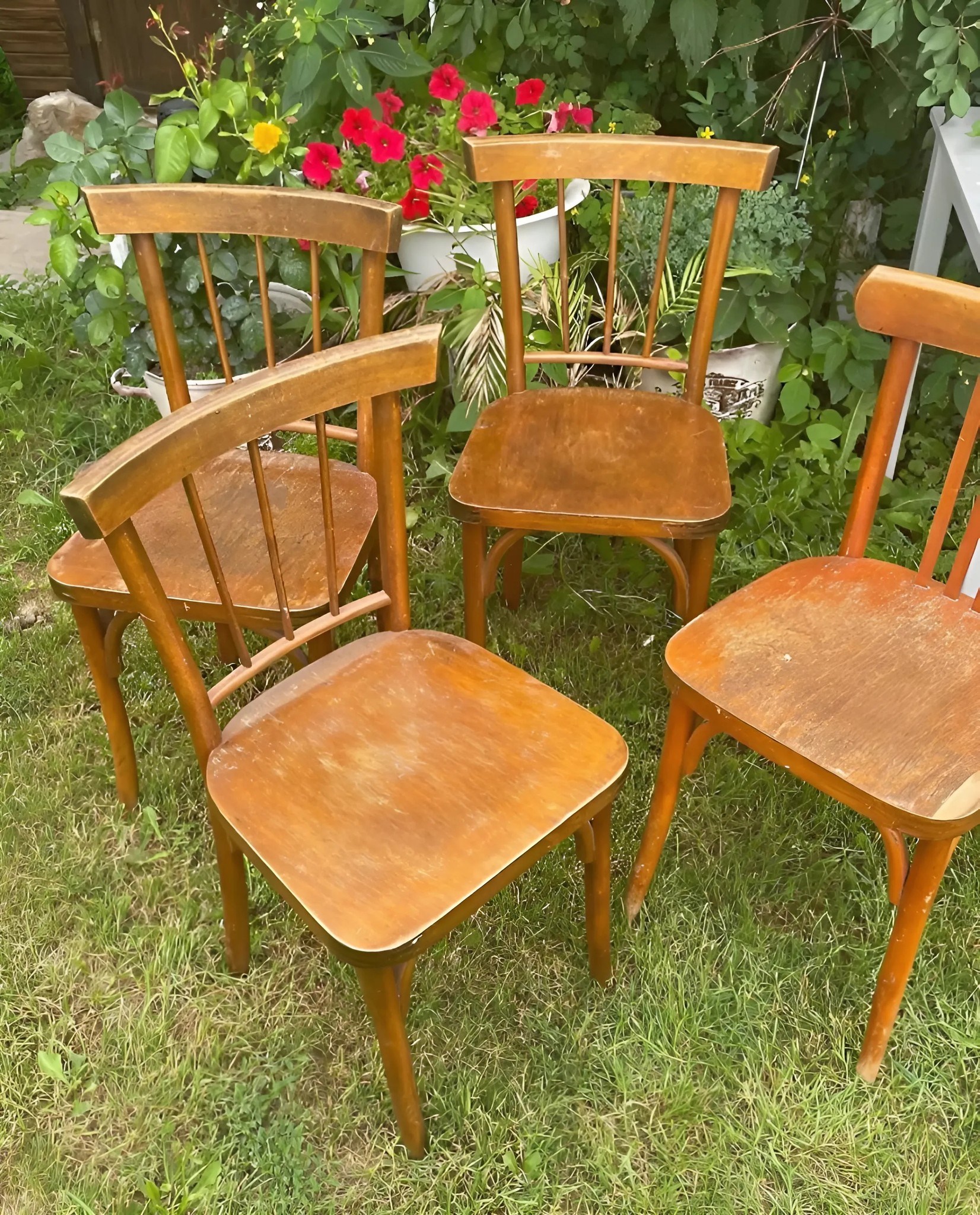ADVERTISEMENT
For Complete Cooking STEPS Please Head On Over To Next Page Or Open button (>) and don’t forget to SHARE with your Facebook friends
3. **Customization:** Restoring old furniture gives you the opportunity to personalize it. By adding a new coat of paint or stain, you can match the restored piece to your current style or home décor.
4. **Quality:** Older wooden furniture often has sturdiness and craftsmanship that’s hard to find in modern mass-produced pieces. Restoring it allows you to keep that quality and make it last for many more years.
### The Restoration Process: Step-by-Step
#### 1. **Assess the Condition**
Before we got started, we took a good look at the chairs to assess the damage. We noticed a few things right away: the paint was chipped and worn, some of the joints were loose, and there were a few scratches and dents on the wood. However, despite the wear, the chairs were still solid and usable, which made them perfect candidates for restoration.
#### 2. **Gather the Materials**
To restore the chairs, we needed a few basic tools and supplies. Here’s what we used:
– Sandpaper (medium and fine grit)
– Wood filler
– Wood stain or paint (your choice)
– Paintbrushes
– Screwdriver or drill (to tighten screws and joints)
– Wood glue (for the loose joints)
– Protective gloves and goggles
– Rags or cloths for cleaning and applying the stain or paint
– Clear protective finish (optional, but recommended for added durability)
#### 3. **Disassemble and Clean the Chairs**
We began by carefully disassembling the chairs. We removed any loose parts, including seat cushions if there were any, and examined the joints and screws. Next, we gave the chairs a good cleaning to remove dirt, dust, and grease that had accumulated over the years. A damp cloth worked well for most of it, but for the tougher spots, we used a mixture of mild soap and water.
#### 4. **Repair the Joints and Scratches**
Some of the chair joints were loose, so we used wood glue to fix them. After applying the glue, we clamped the joints to ensure they dried securely. We also filled in any deep scratches and dents with wood filler. After allowing the filler to dry completely, we sanded the areas smooth so that the surface was even and ready for finishing.
#### 5. **Sanding the Surface**
Once the repairs were complete, it was time for sanding. We started with medium-grit sandpaper to remove any old paint, finish, or rough spots, then moved to fine-grit sandpaper to smooth out the wood and prepare it for staining or painting. Sanding is crucial because it helps the new finish adhere better and ensures a smooth, even surface.
#### 6. **Staining or Painting**
This step was where we had the most fun. We debated whether to stain the chairs to highlight the natural beauty of the wood or to paint them for a fresh, modern look. In the end, we decided to go with a rich dark stain to enhance the wood’s texture and color while keeping the natural warmth of the grain.
Using a brush, we applied the stain evenly, following the direction of the grain. We allowed the stain to soak in for a few minutes before wiping off any excess with a clean cloth. This step was repeated until we achieved the desired depth of color.
For a smoother, more polished finish, we also added a layer of clear protective finish over the stain. This gave the chairs an extra layer of durability and made them easier to clean in the future.
#### 7. **Reassembly and Final Touches**
Once the stain and finish were fully dried, we reassembled the chairs. We tightened all the screws and gave everything one last check to make sure the chairs were sturdy and secure. Finally, we applied a light coat of wax to the surface for added shine and protection.
#### 8. **Admire the Results**
The transformation was incredible! The chairs looked like new, with their deep, rich stain bringing out the natural beauty of the wood. The old worn-out look was gone, and in its place was a timeless, refreshed piece of furniture that felt both modern and nostalgic at the same time.
### Why You Should Try Restoring Your Own Furniture
Restoring old furniture, especially something as meaningful as family heirlooms, is a deeply rewarding experience. Not only does it give you a chance to connect with your family’s history, but it also offers an opportunity to tap into your creativity and craftsmanship. Whether it’s chairs, tables, or any other piece of furniture, you’ll find that the process can be fun, therapeutic, and, most importantly, fulfilling.
### Conclusion
Restoring our parents’ old wooden chairs was more than just a DIY project—it was a way for my brother and me to reconnect with our family’s past while creating something beautiful for the future. The process was rewarding, and the stunning results speak for themselves. Our restored chairs are now more than just functional furniture; they are pieces of family history that will continue to serve as a backdrop for new memories.
So, if you have any old furniture lying around that’s seen better days, consider giving it a second chance. With a little effort, creativity, and a few supplies, you can breathe new life into your own heirlooms and make them look just as stunning as the day they were made!
